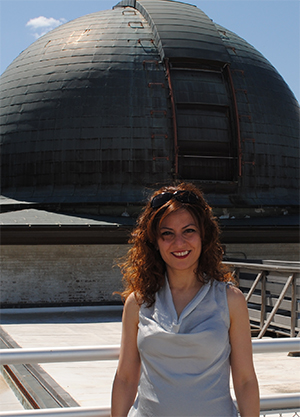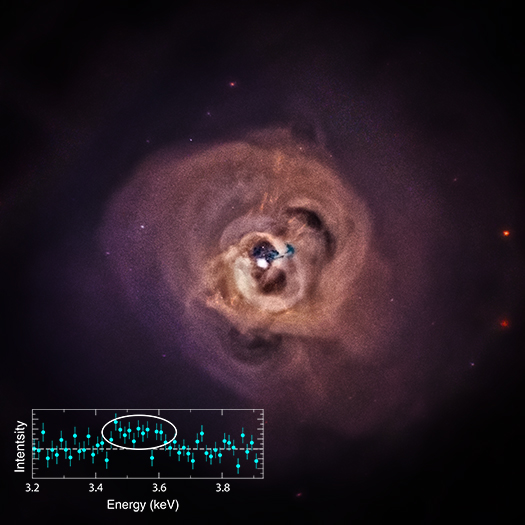A Flash in the Dark!

We are delighted to welcome Esra Bulbul as a guest blogger. Esra led the new study reporting evidence for a mysterious X-ray signal in galaxy clusters, leading to our latest press release. She earned her master’s degree in physics from the Middle East Technical University in the capital city, Ankara, in Turkey in 2006. Four years later she graduated with a PhD in physics from the University of Alabama in Huntsville / NASA Marshall Space Flight Center. After receiving her Ph.D. she moved to the Harvard-Smithsonian Center for Astrophysics as a Smithsonian Astrophysical Fellow working jointly at the NASA Goddard Space Flight Center as a visiting scientist. She is now back at the Harvard-Smithsonian Center for Astrophysics and enjoys living in the greater Boston area.
When I started my first postdoc at the Harvard-Smithsonian Center for Astrophysics, I already knew that one alternative way to improve the sensitivity of current instruments like Chandra and XMM-Newton is to “stack” large numbers of observations of galaxy clusters, meaning that we layer one observation on top of another.
The great advantage of stacking observations is not only an increased signal-to-noise ratio (that is, the amount of useful signal compared to background noise), but also the diminished effects of detector and background features. The X-ray background emission and instrumental noise are the main obstacles in the analysis of faint objects, such as galaxy clusters.
I started by examining the large archive of the XMM-Newton satellite. After 15 years of operation, both XMM-Newton and Chandra have collected large amounts of data, which made this work possible. My primary goal was to refine previous upper limits on the properties of dark matter particles and maybe to find a weak emission line from a metal, which was not detected previously.
These weak emission lines from metals originate from the known atomic transitions taking place in the hot atmospheres of galaxy clusters. After spending a year reducing, carefully examining, and stacking the XMM-Newton X-ray observations of 73 galaxy clusters, I noticed an unexpected emission line at about 3.56 kiloelectron volts (keV), a specific energy in the X-ray range.
I remember being so puzzled when I first saw the line. Its wavelength did not correspond to any of the known atomic transitions. I remember running to my collaborator's office with excitement to show this new emission line. A second surprise came from my doctor at the time. I learned that I was pregnant with my first baby.
To convince myself that this line is not an XMM-Newton artifact I have further investigated the Chandra X-ray observations of the bright core of the Perseus Cluster. The line was also detected in these observations, confirming that it is not an instrumental feature. The next goal was to find the origin of this new line.
My team and I came up with a few astrophysical processes, which could explain this line. We went through these processes one by one carefully. However none of them could produce an emission line at 3.56 keV. Since 80% of galaxy clusters consists of dark matter, one possibility we considered was the decay signature of sterile neutrinos.
According to theory, a well-motivated warm dark matter candidate – a sterile neutrino – decays into an active neutrino by emitting an X-ray photon in the keV range. This X-ray photon can be detectable through X-ray spectroscopy. We found that our results indeed were consistent with the theoretical expectations and the upper limits placed by previous X-ray searches.
It took me a year to confirm the existence of the line in different subsamples and write the paper. Within a few hours of having submitted the paper to ApJ and posted it to the archive, I ran to the hospital and I delivered my baby, Adrian Batu. It was the most rewarding time of my life; I had two babies in a few days.
What is next? Since this line is weak, it is important to confirm it with other satellites. I received a NASA grant to continue searching for this line in the accumulated observations of galaxy clusters with Suzaku, a Japanese X-ray satellite that specializes in looking at the spectra from objects in space. At this point, it is still early to tell if this line originates from dark matter. The next Japanese X-ray mission, Astro-H, will fly in 2015 carrying a high-resolution instrument. With its ability to see better detail in the spectra, we hope we will be able to unambiguously distinguish an astrophysical line from a dark matter signal and tell us what this new X-ray emission truly is.

